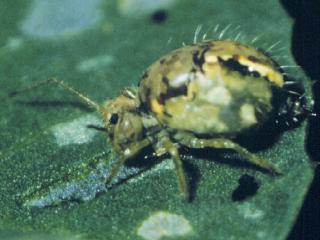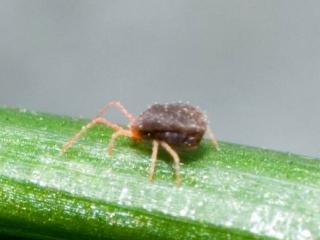Be aware of mites and lucerne flea as crops germinate
- Bruce Rock
- Quairading
- Kojonup
- Kendenup
- Arthur River
David Stead (Anasazi Agronomy) reports that there are small pockets of lucerne flea in dry sown cereal crop seedlings at Bruce Rock and Quairading.
Alec Smith (Kojonup Agricultural Supplies) reports bryobia mite feeding damage in canola near Kojonup. He has also seen redlegged earth mites (RLEM) in crops from Kendenup to Arthur River.
With the recent rainfall needed by the majority of crops to germinate across the grainbelt, it is important to consider the agronomic implications of this type of start to the season and whether further insecticides are required for particular pests.
RLEM are expected to pose an immediate risk to seedlings emerging now (especially canola) as they had already hatched before last week’s rain. Lucerne flea may pose a risk in the near future as they may only be hatching now after recent soaking rains.
Last year many growers were caught out with high levels of lucerne flea damaging crops in June and July because the hatching of eggs was delayed probably beyond the window of insecticide residual activity.
Managing mites and lucerne flea
If crops were sprayed more than two weeks ago they may be susceptible now to mites and lucerne flea and a follow up insecticide may be required.
Insecticides will not kill RLEM eggs so it should not be assumed that a pre-sowing insecticide application has killed all mites that could be present during crop germination. A follow up spray may be required depending on RLEM numbers and crop damage.
Lucerne flea have a high natural tolerance to synthetic pyrethroids so avoid insecticides from this group.
For more insecticide information refer to DPIRD’s 2019 Autumn/Winter Insecticide Guide.
Growers and consultants are urged to apply integrated pest management (IPM) strategies when managing RLEM. These strategies include; identifying mites, rotating different chemical groups and reserving co-formulations or chemical mixtures only for situations where damaging levels of RLEM and other insect pests are present. For more IPM information see DPIRD’s Prevent redlegged earth mite resistance page and GRDC’s Resistance management strategy for the red legged earth mite in Australian grains and pastures fact sheet.
RLEM surveys for resistance will again be undertaken in 2019 for WA properties. DPIRD is particularly interested in testing mites from any properties with synthetic pyrethroid (SP) and omethoate spray failures. To enquire and arrange for resistance testing contact Svetlana Micic, Albany DPIRD on +61 (0)8 9892 8591.
For more information about diagnosing and managing mites refer to the departments;
For more information on invertebrate insects contact Dustin Severtson, Development Officer, Northam on +61 (0)8 9690 2160 or Svetlana Micic, Research Officer, Albany on +61 (0)8 9892 8591.


